Jennifer Boger
AI-Powered Non-Contact In-Home Gait Monitoring and Activity Recognition System Based on mm-Wave FMCW Radar and Cloud Computing
Aug 11, 2022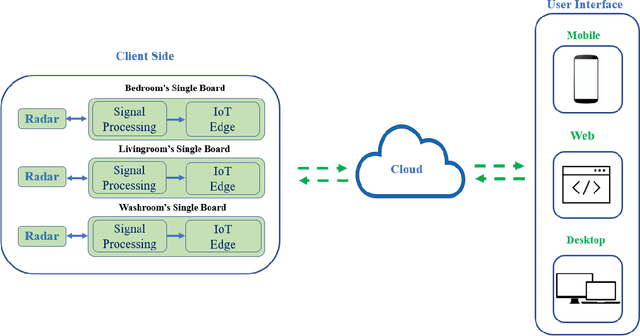
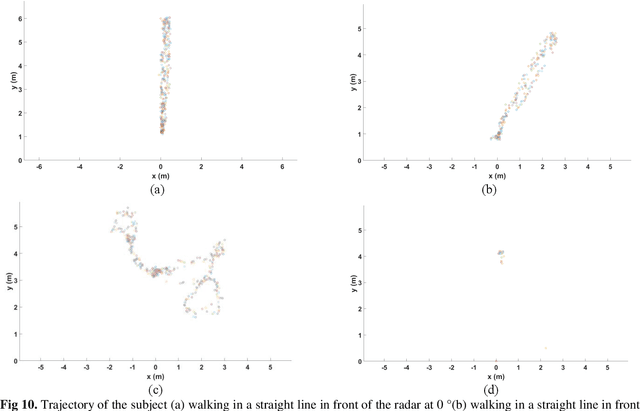
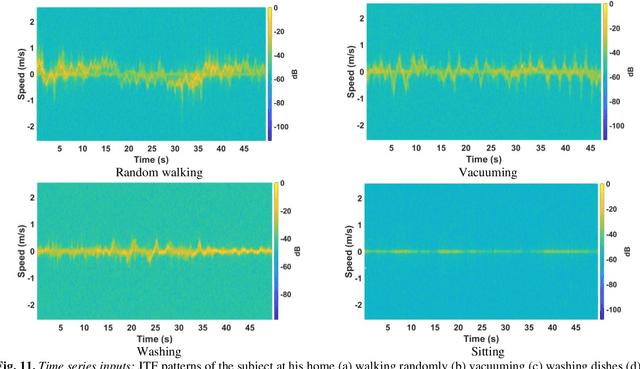
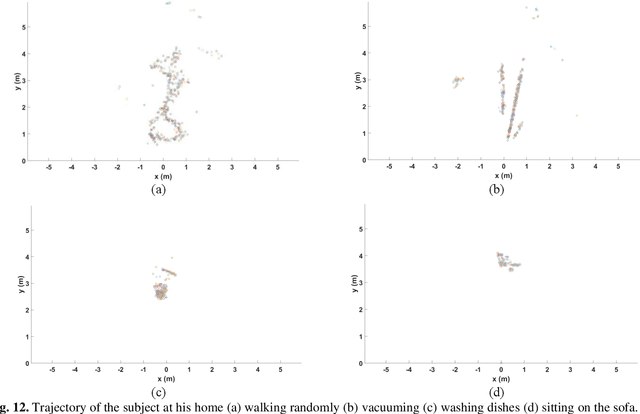
Abstract:In this paper, leveraging AI, cloud computing and radar technology, we create intelligent sensing that enables smarter applications to improve people's daily lives.
Enhancing Food Intake Tracking in Long-Term Care with Automated Food Imaging and Nutrient Intake Tracking Technology
Dec 08, 2021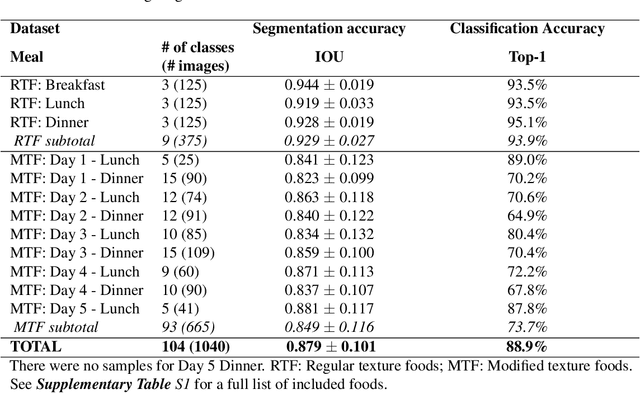
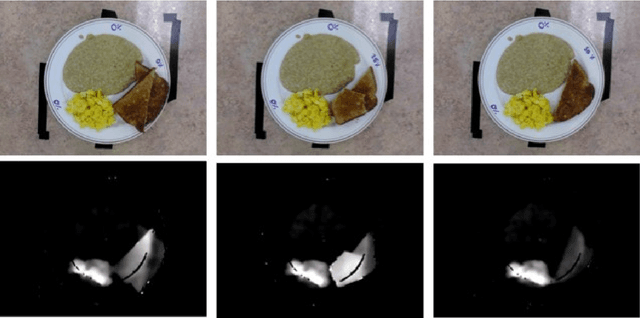
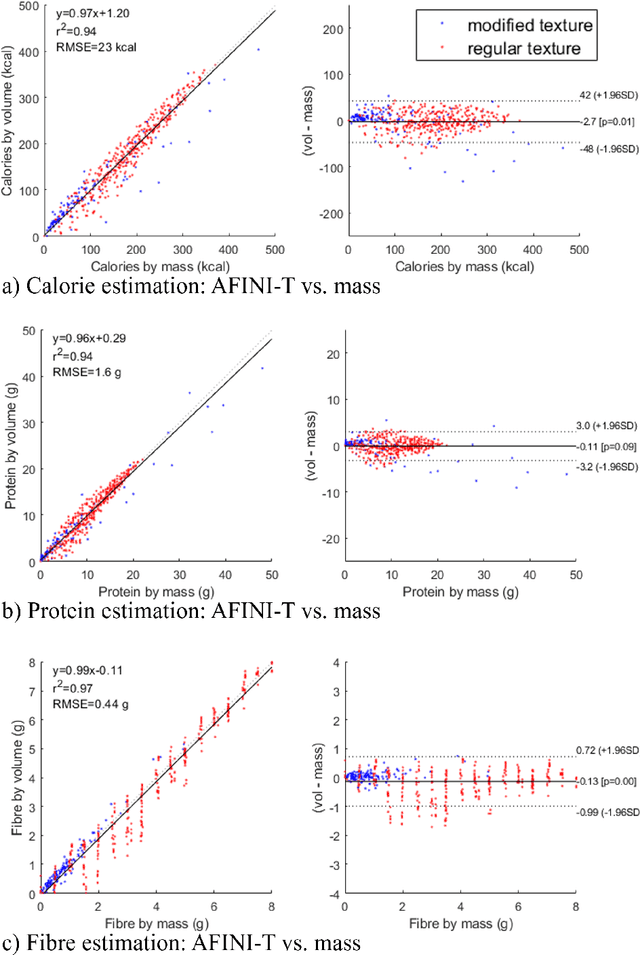
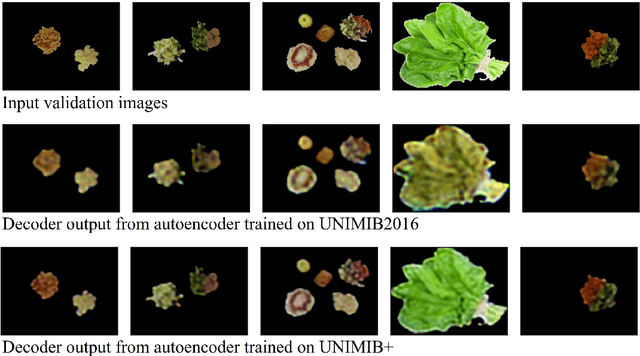
Abstract:Half of long-term care (LTC) residents are malnourished increasing hospitalization, mortality, morbidity, with lower quality of life. Current tracking methods are subjective and time consuming. This paper presents the automated food imaging and nutrient intake tracking (AFINI-T) technology designed for LTC. We propose a novel convolutional autoencoder for food classification, trained on an augmented UNIMIB2016 dataset and tested on our simulated LTC food intake dataset (12 meal scenarios; up to 15 classes each; top-1 classification accuracy: 88.9%; mean intake error: -0.4 mL$\pm$36.7 mL). Nutrient intake estimation by volume was strongly linearly correlated with nutrient estimates from mass ($r^2$ 0.92 to 0.99) with good agreement between methods ($\sigma$= -2.7 to -0.01; zero within each of the limits of agreement). The AFINI-T approach is a deep-learning powered computational nutrient sensing system that may provide a novel means for more accurately and objectively tracking LTC resident food intake to support and prevent malnutrition tracking strategies.
Food for thought: Ethical considerations of user trust in computer vision
May 29, 2019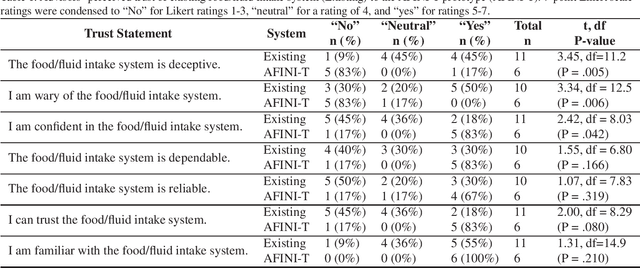
Abstract:In computer vision research, especially when novel applications of tools are developed, ethical implications around user perceptions of trust in the underlying technology should be considered and supported. Here, we describe an example of the incorporation of such considerations within the long-term care sector for tracking resident food and fluid intake. We highlight our recent user study conducted to develop a Goldilocks quality horizontal prototype designed to support trust cues in which perceived trust in our horizontal prototype was higher than the existing system in place. We discuss the importance and need for user engagement as part of ongoing computer vision-driven technology development and describe several important factors related to trust that are relevant to developing decision-making tools.
Democratisation of Usable Machine Learning in Computer Vision
Feb 18, 2019
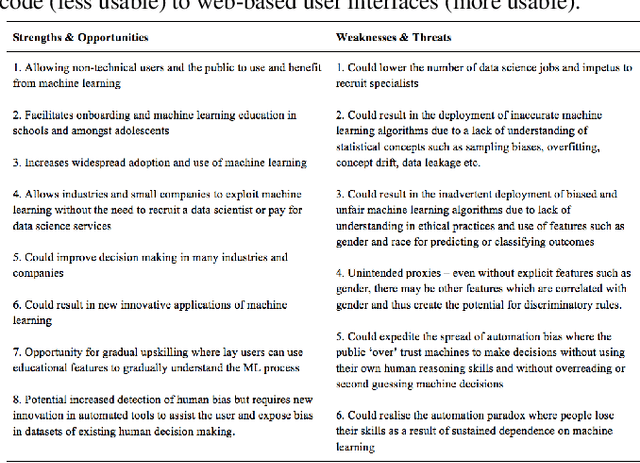
Abstract:Many industries are now investing heavily in data science and automation to replace manual tasks and/or to help with decision making, especially in the realm of leveraging computer vision to automate many monitoring, inspection, and surveillance tasks. This has resulted in the emergence of the 'data scientist' who is conversant in statistical thinking, machine learning (ML), computer vision, and computer programming. However, as ML becomes more accessible to the general public and more aspects of ML become automated, applications leveraging computer vision are increasingly being created by non-experts with less opportunity for regulatory oversight. This points to the overall need for more educated responsibility for these lay-users of usable ML tools in order to mitigate potentially unethical ramifications. In this paper, we undertake a SWOT analysis to study the strengths, weaknesses, opportunities, and threats of building usable ML tools for mass adoption for important areas leveraging ML such as computer vision. The paper proposes a set of data science literacy criteria for educating and supporting lay-users in the responsible development and deployment of ML applications.
 Add to Chrome
Add to Chrome Add to Firefox
Add to Firefox Add to Edge
Add to Edge